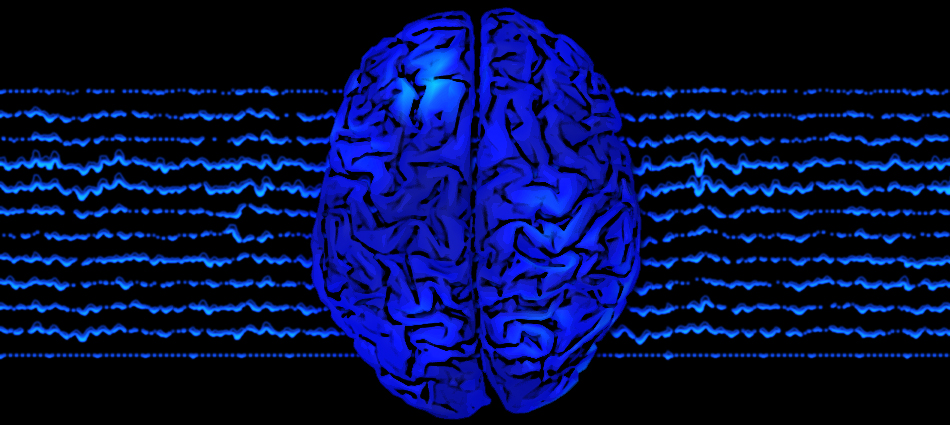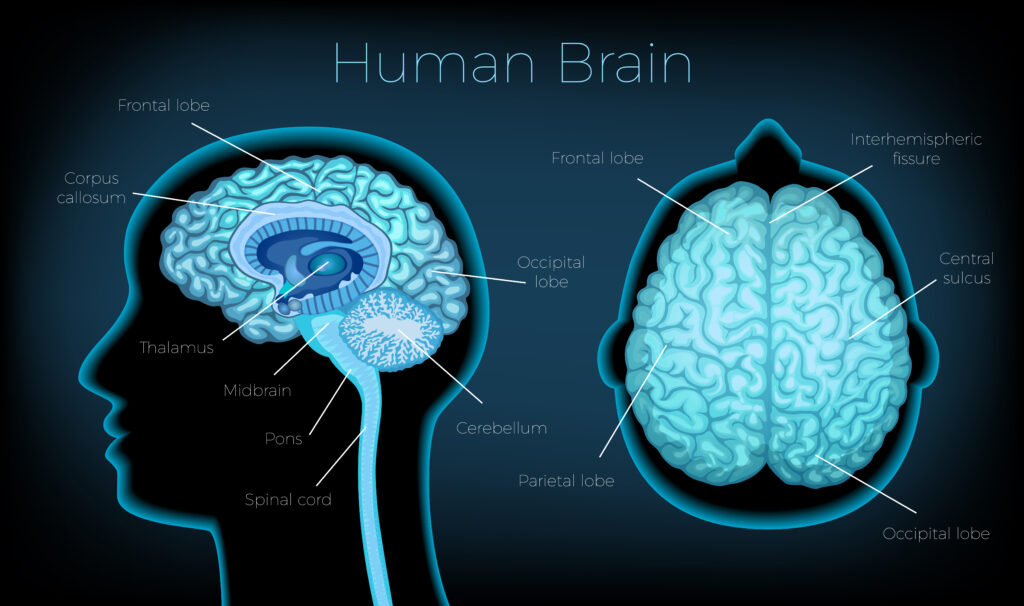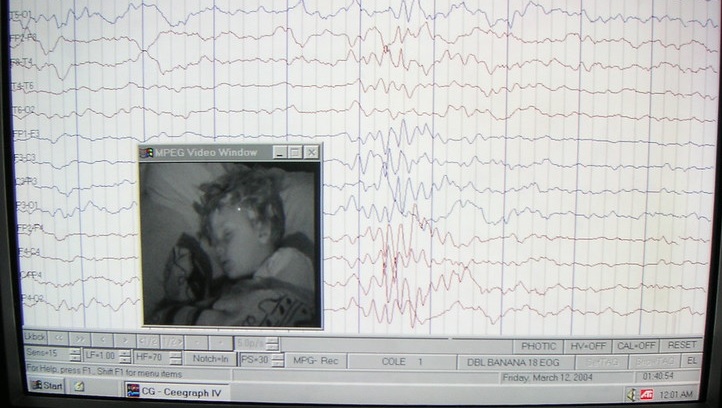Do you want to improve your brain functions and abilities?
Read this.


Nowadays, yoga acts as an alternative therapy or medicine for improving brain function. Several scientists have applied yogic practices to reduce brain disorders, nerve diseases and cognitive impairment.
The yogic intervention increases the potency of the alpha, beta and delta bands in the frontal, central, parietal, occipital and temporal lobes, while it increases the potency of theta band only in the occipital lobe and the potency of the gamma band in the frontal lobes and slightly in the temporal lobes.
Ok, that’s all well and good, but what does it mean concretely?
Structure of your brain


The frontal lobe
Basically, the frontal lobe functions with reasoning, planning, problem solving and cognition.
The parietal lobe
It is associated with visual perception, recognition, information processing and spatial reasoning.
The temporal lobe and occipital lobe
It is related to memory and the processing of verbal and auditory signals. And the occipital lobe with the processing and recognition of visual space.
After yoga practices, scientists found a 19.31% increase in delta, a 5.04% increase in theta, a 15.40% increase in alpha, and an 18.68% increase in gamma wave coherence, while beta wave decreases by 1.67%
Asana, pranayama and meditation practices activate alpha, beta and theta waves which influence perception, memory and mood. Delta wave coherence is associated with higher states of consciousness, and increased alpha wave coherence influences wakefulness and alertness.
What are these brain waves frequencies?
Delta (0.1 to 3.5 Hz)
The lowest frequencies are delta. These are less than 4 Hz and occur in deep sleep and in some abnormal processes. It is the dominant rhythm in infants up to one year of age and it is present in stages 3 and 4 of sleep.
It tends to be the highest in amplitude and the slowest waves.
We increase Delta waves in order to decrease our awareness of the physical world. We also access information in our unconscious mind through Delta. Most individuals diagnosed with attention deficit disorder, naturally increase rather than decrease Delta activity when trying to focus.
The inappropriate Delta response often severely restricts the ability to focus and maintain attention. It is as if the brain is locked into a perpetual drowsy state.
Theta (4-8 Hz)
The next brainwave is theta. Theta activity has a frequency of 3.5 to 7.5 Hz and is classed as “slow” activity. It is seen in connection with creativity, intuition, daydreaming, and fantasizing and is a repository for memories, emotions, sensations. Theta waves are strong during internal focus, meditation, prayer, and spiritual awareness. It reflects the state between wakefulness and sleep and relates to the subconscious mind.
Theta is believed to reflect activity from the limbic system and hippocampal regions.
Theta is observed in anxiety, behavioral activation and behavioral inhibition. When the theta rhythm appears to function normally it mediates and/or promotes adaptive, complex behaviors such as learning and memory. Under unusual emotional circumstances, such as stress or disease states, there may be an imbalance of three major transmitter systems, which results in aberrant behavior.
Alpha (8-12 Hz)
Alpha waves are those between 8 and 12(Hz). Good healthy alpha production promotes mental resourcefulness, aids in the ability to mentally coordinate, enhances overall sense of relaxation and fatigue. In this state you can move quickly and efficiently to accomplish whatever task is at hand.
When Alpha predominates most people feel at ease and calm.
Alpha appears to bridge the conscious to the subconscious. It is the major rhythm seen in normal relaxed adults and present during most of life especially beyond the thirteenth year when it dominates the resting tracing. Alpha rhythms are reported to be derived from the white matter of the brain.
The white matter can be considered the part of the brain that connects all parts with each other. Alpha is a common state for the brain and occurs whenever a person is alert (it is a marker for alertness and sleep), but not actively processing information.
Alpha has been linked to extroversion (introverts show less), creativity (creative subjects show alpha when listening and coming to a solution for creative problems), and mental work.
When your alpha is within normal ranges, we tend to also experience good moods, see the world truthfully, and have a sense of calmness.
Alpha is one of the brain’s most important frequency to learn and use information taught in the classroom and on the job.
Alpha-Theta training can create an increase in sensation, abstract thinking and self-control. Alpha allows us to shift easily from one task to another.
Effects of Training: can produce relaxation, inner-awareness of self, mind/body integration, balance, centering, healing, mind/body connection


Beta (above 12 Hz)
Beta activity is ‘fast’ activity. It has a frequency of 14 and greater Hz. Beta activity reflects desynchronized active brain tissue. This wave usually seen on both sides in symmetrical distribution and is most evident frontally.
It is generally regarded as a normal rhythm and is the dominant rhythm in those who are alert or anxious or who have their eyes open.
It is the state that most of brain is in when we have our eyes open and are listening and thinking during analytical problem solving, judgment, decision making, processing information about the world around us.
Also, Beta would represent overdrive or hyperdrive in our car scenario.
The beta band has a relatively large range, and has been divided into low, midrange and high.
Effects of Training: produce relaxed focus, improved attentive abilities, mental ability, focus, alertness.
Gamma (above 30 Hz)
The subjective feeling states is thinking and the integratation of thoughts with high-level information processing, and associated with information-rich task processing.
Gamma is measured between 30 and 44 (Hz) and is the only frequency group found in every part of the brain. When the brain needs to simultaneously process information from different areas. A good memory is associated with well-regulated and efficient 40Hz activity, whereas a 40Hz deficiency creates learning disabilities.
So how yoga and its practices improve your brain anf life?
Yoga improve brain and body functions : how and which technics?
Yoga is also an important method to stimulate theta activity associated with anxiety and memory.
Kriya based yoga practice showed a 40% increase in alpha and theta waves primarily in the parietal region.
The practice of Asana meditation increases alpha and theta brainwave activities which reduce anxiety.
Meditation also increases frontal alpha coherence, which reflects improved frontal lobe integration that improves cognitive flexibility, intelligence, and emotional stability.
Regularly practiced yoga thus increases overall brain wave activity, which decreases anxiety and increases the ability to concentrate.
Likewise, yogic practices greatly increase alpha activity which improves relaxation, better perception and calmness and relaxation of the mind.. Asana and pranayama considerably increase the activity of alpha waves during yoga sessions.
The beta wave increases cognitive skills after a yoga session and reduced emotional exhaustion, state of anxiety and fatigue and linked to increased sensory awareness.
Yoga increases gray matter volumes in the temporal and frontal lobes and the increase in the amygdala function, which produces positive effects on mental health and improves overall cognitive functions, an improvement in tasks associated with selective attention, concentration, visual processing ability and improved sensory motor activity. It proportionally contributes to memory.
Which acts as an alternative therapy to reduce neurological disorders, and an increase in positive mood and perception.
It improves autonomic flexibility by modulating the parasympathetic system. Parasympathetic responses include an increase of digestive enzymes, decreased heart rate, constriction of bronchial tubes in lungs, and more relaxed muscles…
The practices of agnisara, nauli and bhastrika, alters the pattern of the electroencephalogram around the somatosensory and parietal areas of the cortex cerebral.
Meditation Alters Brainwave Activity


The frequency of brainwave activity is altered depending on the state of consciousness and state of mind during meditation.
Yoga nidra
The practice of yoga nidra is the intermediate stage of wakefulness and sleep, and this stage of the brain produces alpha waves.
During the yoga nidra session, beta activity is slowly replaced by alpha activity.
This has a positive effect on cognitive and affective processes. Researchers observed increases in slow alpha in intermediate meditators, while advanced yoga meditators showed the emergence of rhythmic theta waves.
Yoga nidra produces alpha dominance in the brain and is characterized by mental relaxation, improved frontal integration, cognitive flexibility, intelligence, and emotional stability.
Meditation
The practice of yoga meditation increases alpha activity.
Scientists have examined that the practice of yoga meditation increases the alpha and beta values of approximately 90% of practitioners, reflecting a state of extreme relaxation that increases alertness to the outside world.
The practice of Nadabrahma meditation greatly increases the alpha wave, which reduces stress and anxiety associated with centering and healing with a mind-body connection. While the beta wave physiologically correlates alertness and activity and aids in general activation of mind and body functions.
Kriyas
Sudarshan kriya also increases the alpha band. The practice of meditation increases alpha and theta waves, relieves stress while increasing memory and concentration, external sensory and motor processing performance, arousal, cognitive flexibility, and mind-body coordination.
Scientists have also examined that 10 years of advanced vipassana meditation practice significantly increases gamma power in the parieto-occipital electrodes. Basically, the practice of meditation activates the cingulate gyrus, the thalamus, and the orbital and inferior frontal cortices.
The practice of voluntary meditation increases cognitive performance, while the practice of vipassana meditation increases the concentration of gray matter in the brain.
The practice of Rajyoga meditation reduces neural network activity related to attention, orientation, memory and emotions.
Researchers have reported that meditation improves various cognitive functions, including attention, memory, fluency, executive function, processing speed, and creativity, which positively affects brain function.
Long-term meditation significantly improves information processing speed, while practicing OM meditation also improves mental alertness.
Pranayama alters brain wave coherence


Pranayama techniques increase both alpha and beta activity at the very beginning of practice, which increases awareness and relaxation at the same time. In everyday life, beta activity decreases and alpha activity increases when the person is conscious and awake from daily activities, and this pattern reverses when the person relaxes and falls asleep.
Pranayama practice increases theta power which is associated with decreased activity in the brain’s arousal system and the process of falling asleep. Such a practice improves the state of relaxation with a reduced level of anxiety.
During such practice, the brain has been found to remain deeply focused with a higher level of mental awareness.
Yoga alternate nostril breathing also increases spatial memory scores.
Two months of Sheetali and Sheetkari pranayama are beneficial for body and mind. This indicates that the brain is calm and quiet in a relaxed state with less anxiety. Pranayama practice produces an alpha dominance in the electrical pattern of the brain, which is primarily associated with mental relaxation.
The practice of Nadi sodhan pranayama also increases the power of the alpha and beta band with an increase in the activity of the alpha powers, improving relaxation and cognition, thus leading to a healthy and stress-free life. It increases alertness, wakefulness and excitement, concentration, visual acuity and normal waking state of mind.
Scientists have found that pranayama helps improve the balances between the right and left hemispheres which attribute to circulating neuropsychological functions.
Regular pranayama practice therefore increases cognitive performance, brings relaxation and improves spatial memory performance.
Respiratory regulation improves performance in spatial memory, visual memory, and verbal memory. The processing of sensory information at the thalamic level is facilitated when practicing pranayama.
Yoga improves cognitive function
Yogic intervention increases cognitive performance and better perceived cognition. One study found that practicing hatha yoga for 6 weeks improves working memory and attention shift ability in healthy older adults.
It increases positive mood, short term memory and decreases pain perception, improves various cognitive functions: improved performance, neural activity, active attention and executive functions.
Yogic practices and real facts
Yoga, pranayama, asanas, and meditation improve verbal skills, reaction time, hand-eye coordination, speed, accuracy, and neural performance, develops memory, perception and attention span and activates dormant areas of the brain, while replacing useless memories with useful ones.
Likewise, asanas, kriyas, mudras, bandhas and the practice of meditation develop consciousness, intellectual efficiency and somatic functions.
The practice of yoga meditation improves the state of consciousness, mental activity and the feeling of well-being and responsiveness. Therefore, yoga improves cognition and overall brain functions.
All studies, directly or indirectly, have shown that yoga is beneficial on brain wave activity. In the human body, the brain is the supreme coordinator that regulates all kinds of movements and functions.
Activation of the theta wave reduces anxiety, improves short-term memory and influences the process of memory construction and reduces nervousness.
The theta wave also provides heightened intuition, healing of the body and reprogramming of the subconscious mind.
While the increase in beta band power indicates a higher level of alertness and improved engagement task and improvement in various cognitive abilities such as memory, attention, concentration and reaction time.
The increase in alpha and delta power indicates synchronization of brain activity with greater alertness.
Additionally, improved alpha power indicates greater mental silence, tasks requiring memory and imagination, while a high frequency of alpha is primarily associated with centering , healing and improving the mind/body connection.
Alpha and theta can be interpreted as signifiers of heightened attention. It specifically representing internalized attention as well as indexing states of relaxation. Delta wave is basically associated with the deepest state of consciousness, while enhanced gamma power indicates a higher level of consciousness and awareness, where our mind and body reach a new emerging energy.
Conclusion


These studies demonstrate the beneficial roles of yoga in improving brain wave activity, better cognition, improved neuropsychological function, and overall brain function.
Yoga is positively correlated with overall brain network resilience and efficiency.
These results reveal the possibility of increasing mental resilience, slowing the functional decline of the brain proving that yoga plays an undeniable role in improving brain and physical activity.
As you may have read, intentionally changing brainwave levels through stimulation has many benefits.
Successfully tested in university settings on student panels and used in hospitals for therapeutic purposes, brainwave stimulation helps to strengthen memory and the immune system. Just like alternative medicine, it is recommended in cases of insomnia, stress, anxiety…
Even if brain training relieves many nervous pathologies, it should not be forgotten that it is aimed at any individual wishing to develop his or her cerebral capacities.
From the artist to the meditator to the office worker, everyone will find considerable benefits.
Especially when the brain enters into resonance and consciousness in the most powerful information processing place of the brain: our unconscious.
So what are you waiting for to start and finally take care of yourself with natural and proven methods…
Take a look on studies.
To practice with me: book a free session here
References
EEG paroxysmal gamma waves during Bhramari Pranayama: a yoga breathing technique
Effect of Yoga on Cardiovascular Autonomic Reactivity in Essential Hypertensive Patients
EEG signal based classification before and after combined Yoga and Sudarshan Kriya
Fluid intelligence and brain functional organization in aging yoga and meditation practitioners
EEG alpha and theta oscillations reflect cognitive and memory performance: a review and analysis
